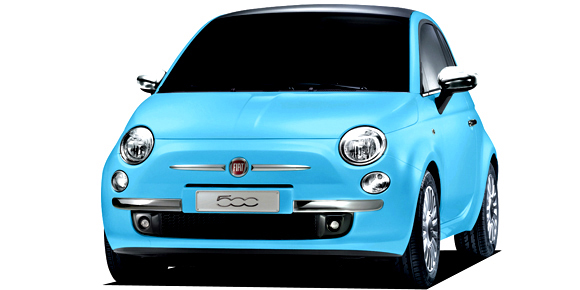According to Salomon (2010) sex differences strongly influence many consumption decisions.
Brain differences between sexes are at the base of males and females different behaviours and attitudes towards brand and products.
Are these differences innate or the product of nurture and culture?
Lise Eliot, professor of Neuroscience at The Chicago Medical School, claims that sex differences in the brain are small.----------------------------------------------------------------------------------
 Experience itself changes brain structure and function.
Experience itself changes brain structure and function.Most sex differences start out small but are amplified as children’s brains meet our gender-infused culture.
Hormones, genes and evolution shaped our brains generating gender differences.
On the other hand sex differences are shaped by social learning and different lifestyles and cultures that boys and girl experience.Therefore Nature and Nurture are strictly correlated and difficoult to split.
Researchers of the University of Iowa found that Straight Gyrus, one subdivision of the prefrontal cortex of the brain involved in social cognition and interpersonal judgment, is proportionally larger in Women.
As a result Women are generally good empathisers, sensitive to other people's emotions.
Therefore i took the BBC Sex ID test.
http://www.bbc.co.uk/science/humanbody/sex/add_user.shtml
My score indicates that my brain has an average "level of masculinity". Indeed i got great scores in the Angles and 3D shapes tasks which require spacial ability.
On average, men are better than women at mentally rotating pictures of three dimensional objects or judging the slope of a line because of a more systemizing brain due to higher levels of testosterone (Simon Baron-Cohen).
On the other hand my score was really poor in the "spot the difference task" and as a matter of fact women are more likely to spot which of a group of objects has been moved to a new position, probably as a consequence of their ancestors way of life.
Unexpectedly i found out to be a good emphatizer as i scored 9 out of 10 in the task testing the ability to judge people's emotions through eyes.
As a result mi brain can be calssified as a balanced brain (Simon Baron-Cohen)
which is equally good at both empathising and systemising even if i think i'm really bad at interpreting people's facial expressions
Research suggests that in women, the two spheres of their brains communicate better than men's and pull in information from both halves. This allows Women to give a more sophisticated emotional response.
Genders in Advertising
Advertising is far more straighforward than scientific research and rely more on common gender stereotypes which have a kernel of truth aniway:
Women are difficult and complicated while Men are simple and sometimes insensitive and dumb.
Targeting Men
Goldstar Beer - Thank God you're a Man
Goldstar ads enforce gender paradigms in order to target Men.
Woman's complexity contrasts with man's simplicity which is reason of relief: Thanks God you're a man.
“Women need a reason to have sex. Men just need a place.”
Billy Cristal, comedian.Men are likely to pick up on one or two very salient and obvious kinds of cues, they think in a more macro way, and need to be shown the big picture without complex metaphors.
Therefore Goldstar marketers used an extremely simple and clear image flowchart which conveys a unique message: Men drink our beer.
"It's funny cause it's true!"
Homer Simpson, middle-class male stereotype.
Targeting Women
Muller Light - The Party
This ad, created by TBVA London, encourages Women to forget fad diets and eat happily ever after with Müller Light.
The main difference between Müller Light and Goldstar ads is complexity of the message.
In the Müller ad the message is multilayred and conveyed with images, colours, music, words and metaphors.
Thanks to Muller light those young women can give up diets (trampling on the books in the mud) and participate in the social life (the party) successfully thanks to their perfect shape.
But the benefits of Muller Light are bigger.
Muller makes them stand out of the crowd as their beautiful classic car arrives in a parking full of grey and boring utility cars.
Muller gives them independence: the song "Got my Life" from the musical Hair is a Hymn to freedom, in this case from fat.
Muller gives them seduction power as the blond girl "hypnotize" the handsome waiter with just a nod.
Muller makes them stand out of the crowd as their beautiful classic car arrives in a parking full of grey and boring utility cars.
Muller gives them independence: the song "Got my Life" from the musical Hair is a Hymn to freedom, in this case from fat.
Muller gives them seduction power as the blond girl "hypnotize" the handsome waiter with just a nod.
In addition, natural colours and green landscapes underline the natural carachteristics of the product.
See you soon my dear hitchhikers
keep following the Guide and...don't leave the Earth without it!
Sources
> Lise Eliot (2010) Pink Brain, Blue Brain: How Small Differences Grow Into Troublesome Gaps And What We Can Do About It. Mariner Books
>Gulas, C., Weinberger, M. (2006) Humor in advertising: a comprehensive analysis. Portland: M.E. Shape
> Solomon, M., Bamossy, G., Askegaard, S. and Hogg, M. (2010) Consumer Behaviour: a european perspective. 4th ed. Harlow, Essex: Pearson Education.






























